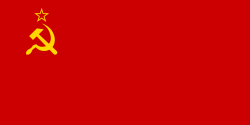Sojuz TMA-13
Denne artikel eller dette afsnit er forældet. (Lær hvordan og hvornår man kan fjerne denne skabelonbesked) |
| Missionsstatistik | |||||
|---|---|---|---|---|---|
| Missionsnavn: | Sojuz TMA-13 | ||||
| Rumagentur: | RKA | ||||
| Rumfartøjets navn: | Sojuz | ||||
| Antal besætningsmedlemmer: | 3 | ||||
| Affyringsrampe: | Bajkonur-kosmodromen | ||||
| Opsendelse: | 12. oktober 2008 | ||||
| Landing: | 8. april 2009 | ||||
| Varighed: | |||||
| Foto af besætningen | |||||
 Richard Garriott, Jurij Lontjakov, Michael Fincke | |||||
| Navigation | |||||
| |||||
Sojuz TMA-13 er en russisk rummission til Den Internationale Rumstation. Opsendt d. 12. oktober 2008 kl. 08:01 dansk tid og forventer at ankomme til rumstationen d. 14. oktober 2008.
Rumfartøjet medbringer to kosmonaut/astronaut'er og en rumturist. Bortset fra rumturisten er det den 18. ISS Ekspedition der ankommer til ISS.
Besætning

 Jurij Lontjakov (Sojuz-kaptajn) (18. ISS-ekspedition-flyvemaskinist)
Jurij Lontjakov (Sojuz-kaptajn) (18. ISS-ekspedition-flyvemaskinist)
 Michael Fincke (Sojuz-flyvemaskinist) (18. ISS-ekspedition-kaptajn)
Michael Fincke (Sojuz-flyvemaskinist) (18. ISS-ekspedition-kaptajn)
 Richard Garriott (rumturist) (Retur: Sojuz TMA-12 d. 23. oktober)
Richard Garriott (rumturist) (Retur: Sojuz TMA-12 d. 23. oktober)
Bemandet Sojuz-flyvning nummer 100?
Kaptajnen Jurij Lontjakov har optalt at Sojuz TMA-13 er den 100. bemandede Sojuz-flyvning. Han anbragte tallet "100" i midten af missionsemblemet, der har form som Sojuz' returmodul.[1] Der er dog kritikere der mener at det kun er den 97. – allerhøjest den 99. flyvning. To Sojuzmissioner blev afbrudt efter starten og kom ikke i kredsløb: Sojuz 18a (april 1975) med Vasilij Lazarev og Oleg Makarov fløj en suborbital flyvning da Sojuzfartøjet blev frakoblet dets defekte løfteraket i 145 km højde og Sojuz T-10a (sept. 1983) med Vladimir Titov og Gennadij Strekalov forlod en eksploderende løfteraket på startrampen ved hjælp af redningsraketterne. I februar 1979 blev Sojuz 34 opsendt ubemandet til Saljut 6. Kosmonauterne Vladimir Ljakhov og Valerij Rjumin kom ned på Jorden med Sojuz 34. De var ankommet med Sojuz 32 der landede ubemandet. Manøvren skyldtes at Sojuz 33 aldrig nåede op til Saljut 6, så man var bange for om Sojuz 32 stadig var brugbar efter 175 dage i rummet.
Galleri
Sojuz TMA-13's løfteraket på Bajkonur-kosmodromen.
Størrelseforholdet mellem Sojuz-fartøjet og rumfærgen.
Missionsemblem til ISS Ekspedition 18, første del
Hovedartikler:
Eksterne henvisninger
- Ny besætning op til rumstationen søndag morgen Arkiveret 13. oktober 2008 hos Wayback Machine Ingeniøren (dansk)
- Expedition 18 Crew To Launch from Baikonur Arkiveret 12. oktober 2008 hos Wayback Machine NASA (engelsk)
- ^ The 100th Soyuz flight that (maybe) isn't hentet d. 14. oktober 2008 (engelsk)
| |||||||||||||||||||||||||
Medier brugt på denne side
Forfatter/Opretter: David Vignoni (globe, clock face/ring), Anomie (clock hands), David Göthberg (making the clock red, shadows). Anomie and David G (putting all the parts together)., Licens: LGPL
Globe with clock to represent a "current event"
Forfatter/Opretter:
The original uploader was Yzmo at engelsk Wikipedia.
Later versions were uploaded by Tene at en.wikipedia., Licens: LGPLThis image is combined from the following two images.
NASA astronaut Michael Fincke (right), Expedition 18 commander; Russian Federal Space Agency cosmonaut Yury Lonchakov (center), flight engineer; and American spaceflight participant Richard Garriott pose for a portrait following an Expedition 18/Soyuz 17 pre-flight press conference at NASA's Johnson Space Center. Fincke, Lonchakov and Garriott are scheduled to launch to the International Space Station in a Soyuz spacecraft in October.
Space Shuttle Orbiter and Soyuz-TM (drawn to scale). Current spacecraft used by humans to travel in space.
The Soyuz TMA-13 spacecraft arrives at the launch pad at the Baikonur Cosmodrome in Kazakhstan, Friday, Oct. 10, 2008, for the Oct. 12 launch that will carry Expedition 18 Commander Michael Fincke, Flight Engineer Yury V. Lonchakov and American spaceflight participant Richard Garriott to the International Space Station. The three will dock their Soyuz to the International Space Station on Oct. 14. Fincke and Lonchakov will spend six months on the station, while Garriott will return to Earth Oct. 24, 2008, with two of the Expedition 17 crew currently on the station.
ISS Expedition 18 patch
This emblem represents the eighteenth expedition to the International Space Station (ISS). Featured prominently is the Roman numeral XVIII. The "X" evokes exploration, which is at the core of the indivisible cooperation of the International Space Station partners. "V" is for victory and for the five space agencies in the ISS program. "III" stands for the hope that this crew will help evolve the ISS from supporting the last three-person crew to crews of six explorers and researchers. The moon, sun and stars symbolize the efforts of the entire ISS team, which will lead to the human exploration of the moon, our solar system and beyond.
Forfatter/Opretter: Kwamikagami, Licens: CC BY-SA 4.0
symbol of Mars. 16 × 16 pixel nominal dimensions, lines 2 pixel thick, square caps. Colour 75% blue: red=0 green=0 blue=191 (#0000BF).













